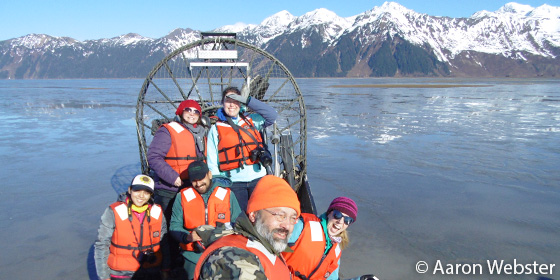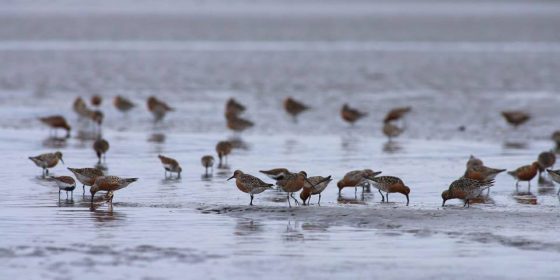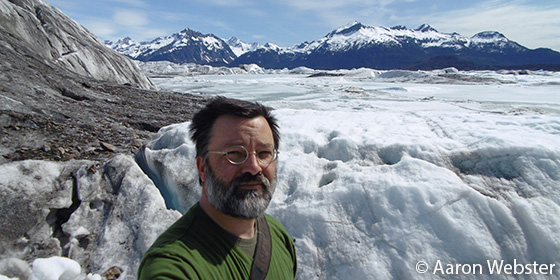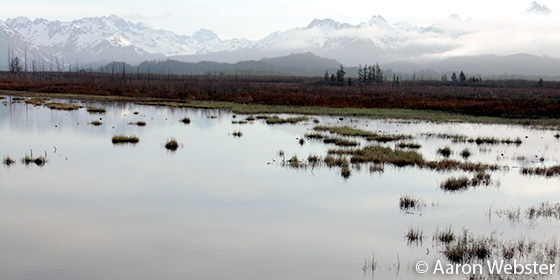Linking Sites, Linking Communities
Pacific Flyway Exchange
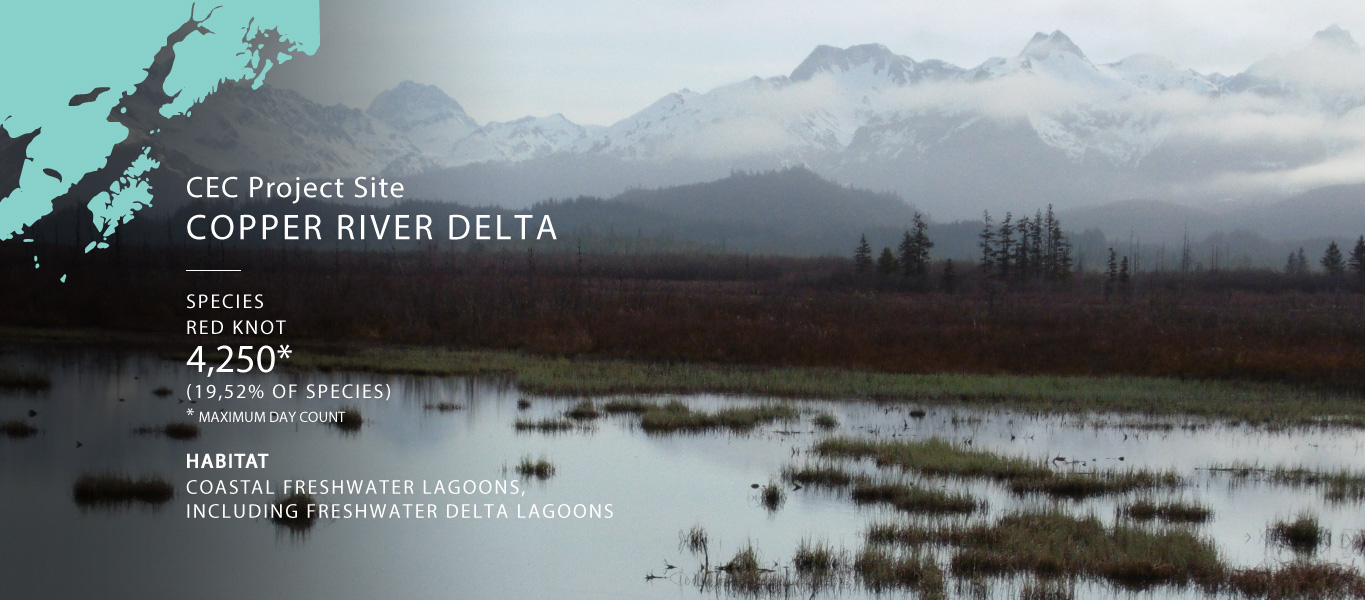
Alaska, United States
The Copper River Delta in Alaska is an important staging area for nearly five million migrating shorebirds in early May, and also provides nesting habitat for several shorebirds that breed there.
Over 90 percent of Red Knots tagged with tracking devices at Grays Harbor, Washington, were detected in the Copper River Delta and nearby Cotroller Bay. These results suggest that Copper River Delta and Cotroller Bay are extremely important spring stopover sites and likely support a large proportion of the total roselaari Red Knot population. Although these sites’ importance to Red Knots is apparent, more research is needed to better understand the spatial-temporal patterns of use.
Recognition
In recognition of the site’s importance to shorebirds, in 1990 the Copper River Delta was designated a Site of Hemispheric Importance by the Western Hemisphere Shorebird Reserve Network (WHSRN). For over 25 years, the local town of Cordova (with a population of approximately 2,300 residents) has celebrated this wonderful spectacle of nature with an annual shorebird festival. It is estimated that nearly 300 visitors participated in the 26th Copper River Delta Shorebird Festival, in 2017.
In May 2017, CEC supported the participation in the Copper River Shorebird Festival of representatives from other important shorebird sites along North America’s Pacific flyway. The goal of the exchange was to facilitate the sharing of best practices and lessons learned from Cordova about ways to develop ecotourism opportunities that promote shorebird conservation while generating economic benefits for the local economy.
Exchange
Six site representatives participated in the exchange: four from Washington, United States, who represented Willapa Bay and Grays Harbor WHSRN sites; and two from Ensenada, Mexico, who represented the Bahía de Todos Santos proposed WHSRN site. Not only did the exchange allow these site representatives to experience and learn from a longstanding shorebird festival, but it also helped to build relationships that strengthen the nascent North American Pacific Coast Flyway Network.
Photo Gallery
Partners

Sites in this Exchange
Copper River Delta
Alaska, USA
The Copper River Delta in Alaska is an important staging area for nearly five million migrating shorebirds in early May, and also provides nesting […]
Grays Harbor
Washington, USA
Grays Harbor is a large bay on the southern coast of Washington State used by Red Knots and many other species of shorebirds for […]
Willapa Bay and Longbeach Peninsula
Washington, USA
Willapa Bay and the Long Beach Peninsula represent the largest remaining tidal mudflat and coastal salt marsh habitat in southwestern Washington […]
Bahía de Todos Santos
Baja California, Mexico
Off the coast of Ensenada, in Baja California, Bahía de Todos Santos hosts a number of overwintering migratory birds, including roselaari Red Knots […]

Produced with support from the Commission for Environmental Cooperation – www.cec.org
The Commission for Environmental Cooperation (CEC) is an intergovernmental organization that supports the cooperative environmental agenda of Canada, Mexico and the United States to green North America’s economy, address climate change by promoting a low-carbon economy, and protect North America’s environment and the health of its citizens.
To foster North American conservation opportunities for Semipalmated Sandpipers (Calidris pusilla) and Red Knots (Calidris canutus—rufa and roselaari subspecies), the Commission for Environmental Cooperation (CEC) started an initiative to inform, engage and connect communities at key sites for these two species. This included linking sites in the Pacific flyway and the Atlantic flyway.




